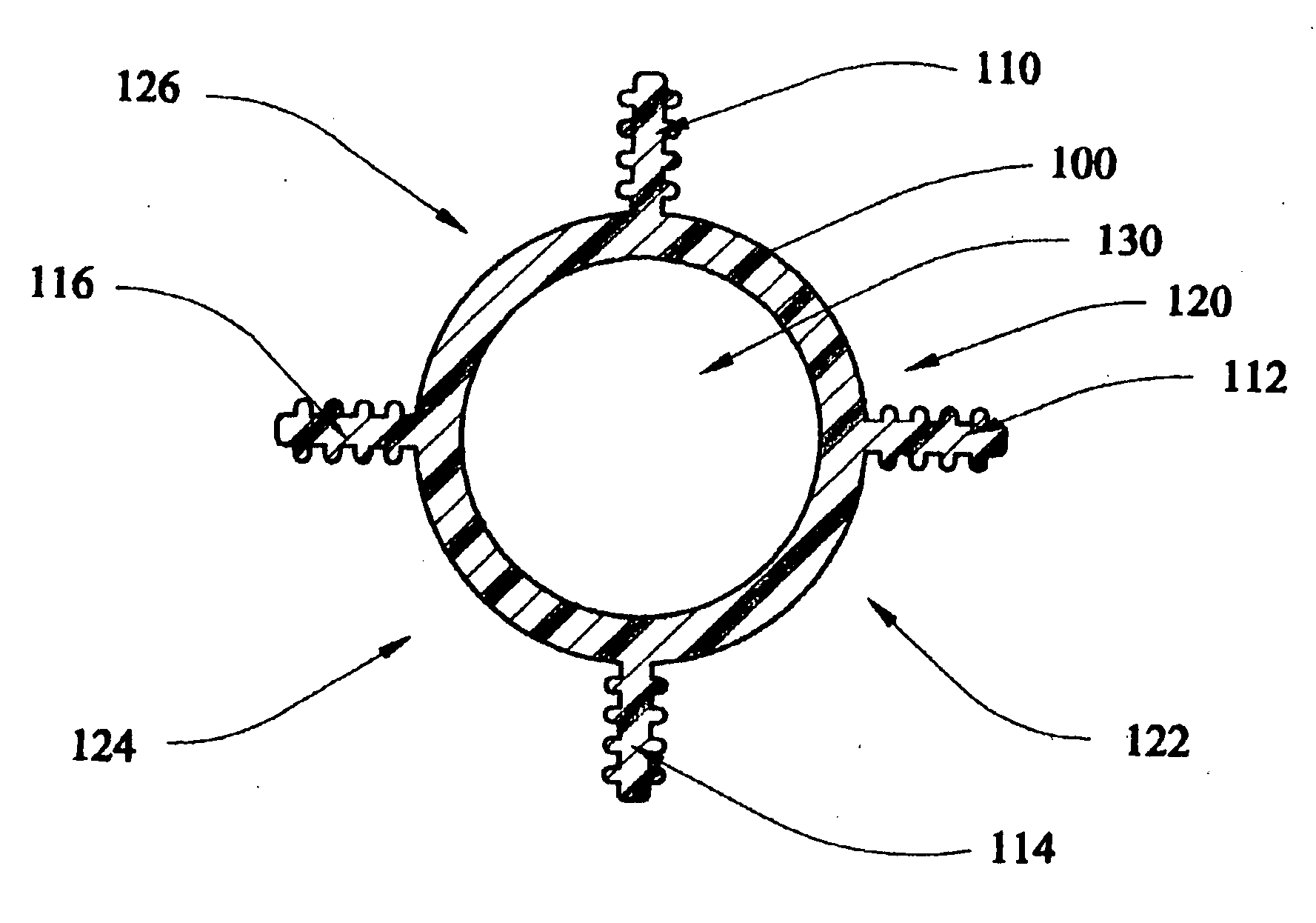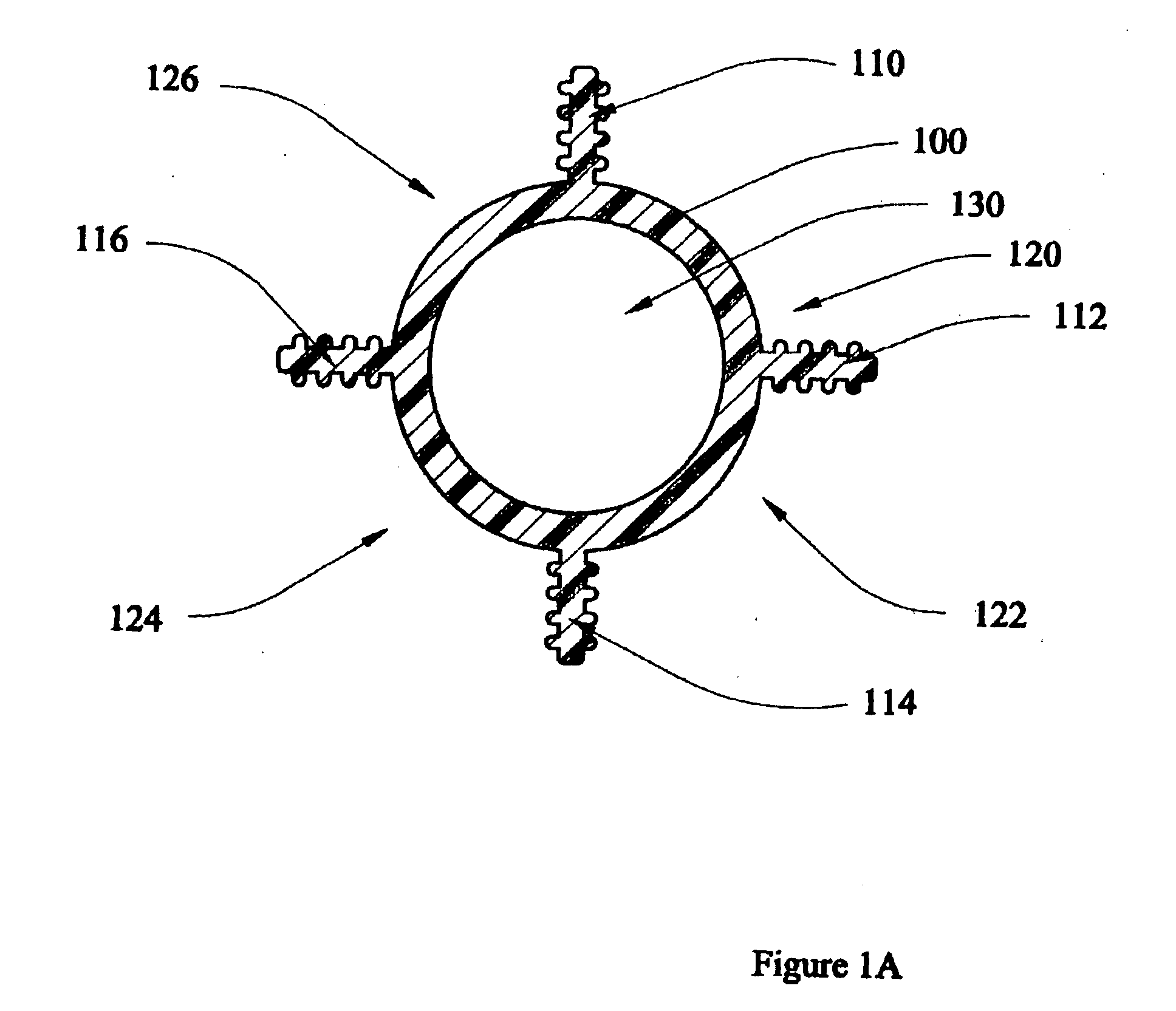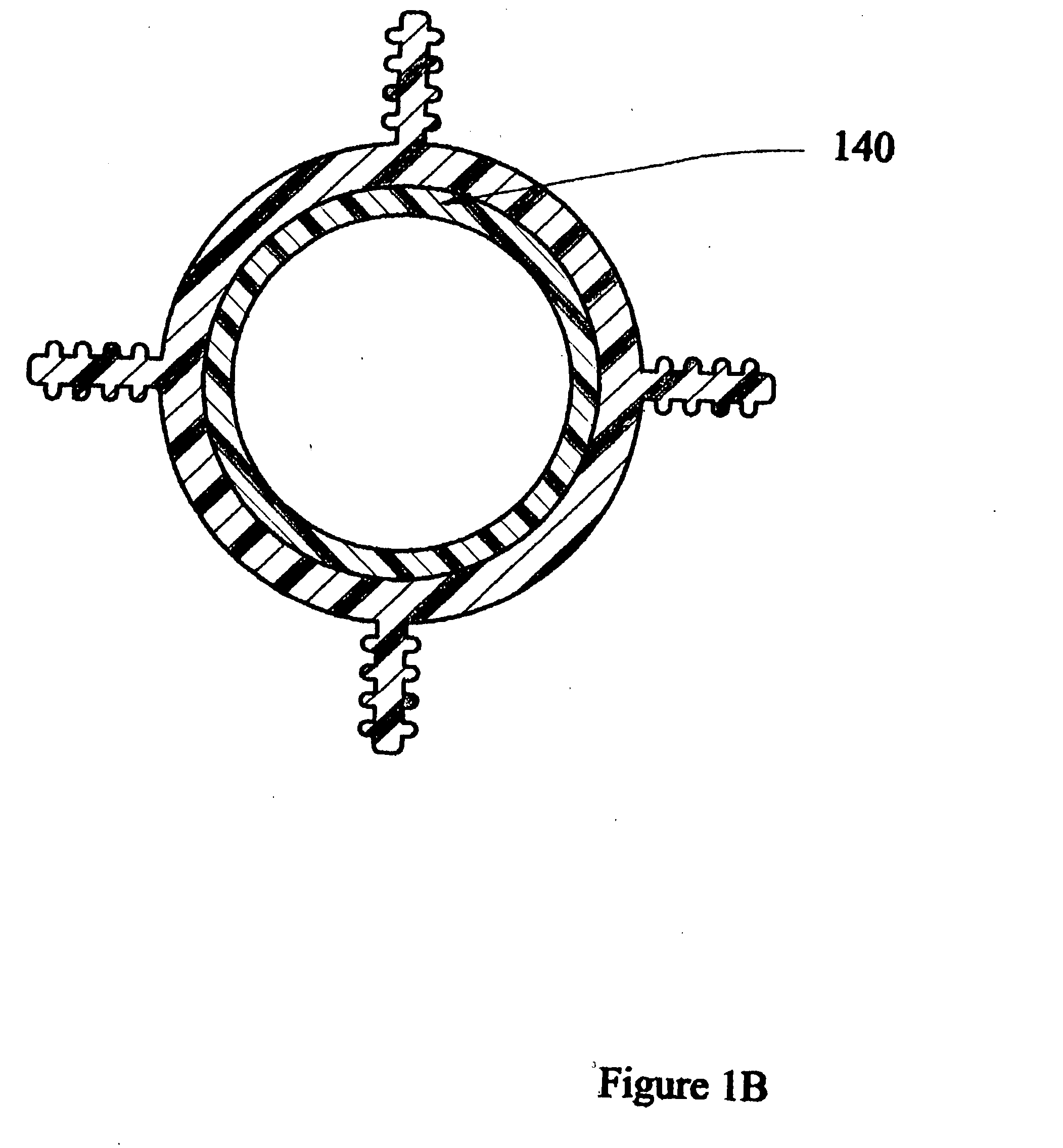Support separators for high performance communications cable with optional hollow tubes for; blown optical fiber, coaxial, and/or twisted pair conductors
a technology of support separators and high-performance communications cables, which is applied in the direction of insulated conductors, cables, instruments, etc., can solve the problems of increased cross-talk, unsatisfactory energy transfer between conductor pairs, and shielded cables, etc., and achieves the effect of sufficient strength
- Summary
- Abstract
- Description
- Claims
- Application Information
AI Technical Summary
Benefits of technology
Problems solved by technology
Method used
Image
Examples
second embodiment
[0133]FIG. 1B is a cross-section view of the cable support-separator that includes the same symmetrical core with a central circular ring region as for FIG. 1A, but also includes a second inner ring (140) within the hollow region comprised of a different material than the outer ring for either increasing lubricity or friction with four extending rifled protrusions each extending in a preferred 90 degree separation from each other for optimum pair separation.
third embodiment
[0134]FIG. 1C is a cross-section view of the cable support-separator that includes the same symmetrical core with a central circular ring region as for FIG. 1A, but also includes a second inner ring within the hollow region comprised of a different material than the outer ring for increasing friction utilizing rifled inner spatially arranged sections (150) with four extending rifled protrusions each extending in a preferred 90 degree separation from each other for optimum pair separation.
fourth embodiment
[0135]FIG. 1D is a cross-section view of the cable support-separator that includes the same symmetrical core with a central circular ring region as for FIG. 1C, but also includes the optional use of a organic or inorganic fibers (160) including polyamide (for example Kevlar®) filling and an optional strength member within the second inner ring within the hollow region comprised of a different material than the outer ring as well as allowing for multiple separate multimode or single mode fiber optic units (162) also contained within the same hollow region with four extending rifled protrusions each extending in a preferred 90 degree separation from each other for optimum pair separation.
PUM
| Property | Measurement | Unit |
|---|---|---|
| frequencies | aaaaa | aaaaa |
| frequencies | aaaaa | aaaaa |
| frequencies | aaaaa | aaaaa |
Abstract
Description
Claims
Application Information
 Login to View More
Login to View More - R&D
- Intellectual Property
- Life Sciences
- Materials
- Tech Scout
- Unparalleled Data Quality
- Higher Quality Content
- 60% Fewer Hallucinations
Browse by: Latest US Patents, China's latest patents, Technical Efficacy Thesaurus, Application Domain, Technology Topic, Popular Technical Reports.
© 2025 PatSnap. All rights reserved.Legal|Privacy policy|Modern Slavery Act Transparency Statement|Sitemap|About US| Contact US: help@patsnap.com



